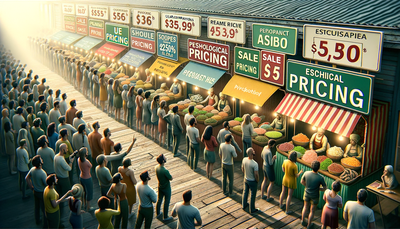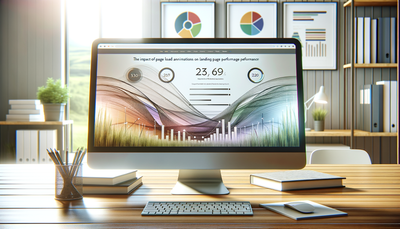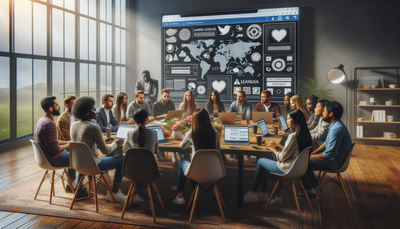The Art of Whitespace: Mastering Negative Space in Web Design
In the realm of web design, whitespace, also known as negative space, is a powerful tool that often goes unnoticed but plays a crucial role in creating visually appealing and effective websites. This article delves into the art of whitespace, exploring its significance in web design and how it can be strategically employed to enhance user experience. We'll examine the principles behind using negative space to create balanced layouts, improve readability, and guide user focus. By mastering the use of whitespace, designers can create cleaner, more intuitive interfaces that not only look aesthetically pleasing but also function more efficiently. Join us as we uncover the secrets of this subtle yet impactful design element.Table of Contents:

Understanding Whitespace in Web Design
Whitespace, contrary to its name, isn't always white. It refers to any empty space in a design, including areas between elements, margins, paddings, and even spaces within graphic elements. In web design, whitespace serves multiple purposes. It helps to create a sense of balance and harmony, improves readability by preventing cluttered layouts, and guides the user's eye to important elements on the page.Effective use of whitespace can make a website feel more open, modern, and sophisticated. It allows content to breathe and stand out, making it easier for users to digest information. By strategically implementing whitespace, designers can create a visual hierarchy that enhances the overall user experience and makes navigation more intuitive.
Do you need a website? Want to build a website but don't know where to start? Our website builder is the perfect solution. Easy to use, and with the ability to customize to fit your business needs, you can have a professional website in no time.
The Benefits of Embracing Negative Space
Incorporating ample whitespace in web design offers numerous advantages. Firstly, it significantly improves readability. By providing adequate spacing between lines of text, paragraphs, and other elements, users can more easily scan and comprehend content. This is particularly important in today's fast-paced digital environment where users often skim through information.Secondly, whitespace contributes to a cleaner, more professional appearance. It prevents the design from feeling cluttered or overwhelming, which can be off-putting to users. A well-balanced use of negative space can make a website appear more high-end and trustworthy. Lastly, strategic use of whitespace can draw attention to specific elements, such as call-to-action buttons or important pieces of content, by isolating them from surrounding elements.
Creating Balance with Whitespace
Achieving balance in web design is crucial for creating visually appealing and functional layouts. Whitespace plays a pivotal role in this process. By carefully distributing empty space around and between elements, designers can create a sense of equilibrium that is pleasing to the eye.One effective technique is to use asymmetrical balance, where whitespace is used to offset heavier elements on the page. For example, a large image or block of text on one side of the layout can be balanced by ample whitespace on the opposite side. This creates visual interest while maintaining a harmonious overall composition. Additionally, consistent use of whitespace throughout a design helps to establish a rhythm and coherence that guides users through the content smoothly.
Building a website with SITE123 is easy
Enhancing Readability Through Negative Space
One of the primary functions of whitespace in web design is to enhance readability. This is achieved through careful consideration of spacing at various levels. At the micro level, designers must pay attention to the space between letters (tracking) and lines of text (leading). Adequate spacing here prevents text from appearing cramped and difficult to read.On a larger scale, generous margins and padding around blocks of text help to create a more inviting reading experience. Whitespace around paragraphs and between different sections of content allows the eye to rest and process information more effectively. By breaking up large chunks of text with whitespace, designers can make even lengthy content feel more approachable and less daunting to users.
Guiding User Focus with Strategic Whitespace
Whitespace is a powerful tool for directing user attention to key elements on a webpage. By surrounding important content or interactive elements with ample negative space, designers can create a visual hierarchy that naturally draws the eye. This technique is particularly effective for highlighting call-to-action buttons, important messages, or featured products.Moreover, the strategic use of whitespace can help to group related elements together while separating distinct sections. This visual organization aids in the user's understanding of the content structure and improves overall navigation. By carefully considering the placement and amount of whitespace, designers can create clear pathways for users to follow, enhancing the overall flow and usability of the website.
Responsive Design and Whitespace
In the era of responsive web design, the role of whitespace becomes even more critical. As layouts adapt to different screen sizes, the strategic use of negative space can help maintain readability and visual appeal across devices. On smaller screens, whitespace might need to be reduced to accommodate content, but it should never be eliminated entirely.Designers must consider how whitespace will scale and adjust on various devices. This might involve using relative units for spacing and implementing breakpoints where the distribution of whitespace changes to optimize the layout for different screen sizes. The goal is to maintain a balance between content density and breathability, ensuring that the design remains effective and visually pleasing regardless of the device it's viewed on.
Common Pitfalls and How to Avoid Them
While whitespace is a powerful design tool, it's possible to misuse it. One common mistake is using too much whitespace, which can make a design feel empty or disconnected. Conversely, not using enough whitespace can lead to cluttered, overwhelming layouts. The key is to find the right balance for your specific design and content.Another pitfall is inconsistent use of whitespace, which can create a disjointed user experience. Maintain consistency in spacing throughout your design to create a cohesive feel. Additionally, be mindful of 'trapped' whitespace – awkward spaces between elements that can disrupt the flow of the design. Regular testing and refinement are essential to ensure that your use of whitespace enhances rather than detracts from the overall design.





